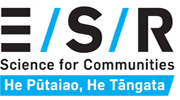ESR are spearheading efforts to extract genetic clues from COVID-19 samples that can guide our national efforts to fight the pandemic.
The work is aimed at providing real-time genomics data and interpretation for New Zealand decision makers.
Early this month, ESR was the first to perform a genome sequence on COVID-19 in New Zealand.(external link) ESR’s Bioinformatics team uploaded the data to international databases for viral sequences to allow the data to be displayed and interrogated on online platforms like Nextstrain, which aims to aid epidemiological understanding and improve outbreak response by providing analytics and visualisations.
ESR scientist Dr Joep de Ligt says community transmission means that traditional epidemiology and contact tracing hasn’t been able to identify how the patient came to be infected.
“The genetic data from each positive COVID-19 sample holds valuable information. Sequencing the genome and comparing it to other genome sequences from samples both here and abroad can help us understand where it has come from. As we’re seeing fewer cases during the level-4 lockdown, identifying exactly how transmission is occurring is crucial if we are to eliminate the disease. Rapid sequencing of each case can help identify if it’s linked to a particular cluster, to other cases near-by, or from another region.”
Dr de Ligt says they have been working with Nextstrain to host a New Zealand specific version of the platform.
“As we get more information, my colleagues Matt Storey and Dr Una Ren, work with scientists across New Zealand from and the globe to interpret this data and provide input into the COVID-19 response team,” Dr de Ligt says. “The potential impact of the work is broad, the RNA genome provides very rich information for surveillance, contact tracing, modelling and research purposes. Internationally these data are used by teams that are developing drugs and vaccines.”
Collaborating scientists range from Te Pūnaha Matatini, Auckland, Otago, Massey and Victoria university, as well asNextstrain, US and UK.
Dr James Hadfield, a Wanaka-based phylogeneticist with Seattle's Bedford Lab, said the level of collaboration between scientists around the world had been unprecedented.
“This has allowed efforts such as Nextstrain.org to present a continually updated view into the movements of the virus around the world, and is a good example where the sum of data from around the world is more informative than any one source in isolation,” Hadfield said.
ESR is investing a sizable amount, around $150,000 towards the project, including the purchase of a GridION to enable the near real-time throughput needed to have a direct impact. As cases have grown to over 1000 cases, ESR prioritising the sequencing of certain cases for maximum benefit, but ESR has been actively increasing the numbers of COVID-19 cases it can sequence each week. As part of ESR long standing partnership with Illumina they have implemented a sequencing protocol that leverages the superior throughput of the Illumina NextSeq to sequence large numbers of background genomes. This combination of techniques allows the rapid generation of genomes for time sensitive inquires while providing high quality genomes for surveillance purposes.
This involves an interplay of logistics, technical expertise and having enough sequencing machines and reagents.
“We’re learning all the time and working to improve the different bottlenecks in the process,” Dr de Ligt says. “Currently there are some delays in samples being referred for whole genome sequencing, partly due to increased testing load on testing laboratories. When ESR can get the samples, we have capacity to sequence and currently have capacity to prepare more sample for the vital work.”
The work is just one part of a much larger body of health intelligence services for the Ministry of Health; providing national and international health intelligence to the Ministry and the wider health sector about the global pandemic of COVID-19.
ESR chief scientist Dr Brett Cowan says ESR is committed to the very best science for New Zealand during this challenging time.
“ESR has previously invested in sequencing and bioinformatics capability, as we could see the potential and this case is only one application. We have moved with agility and speed to perform the science that is required. ESR is investing time and money in this, but without the support of partners, we cannot complete this task. There is a wide collaborative group of New Zealand (and international) scientists, to get this work across the line.
“We need the support of referring laboratories that send their positive samples to ESR from around the country; the scientists and clinical microbiologists that enable analysis and communication; the epidemiological team that prioritises samples and translates the results to public health guidance. All these teams come together and enable ESRs sequencing team to study the genome of this virus and inform New Zealand’s COVID response.”
